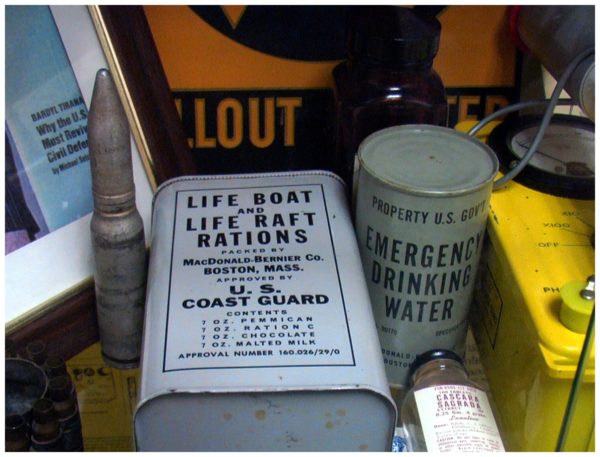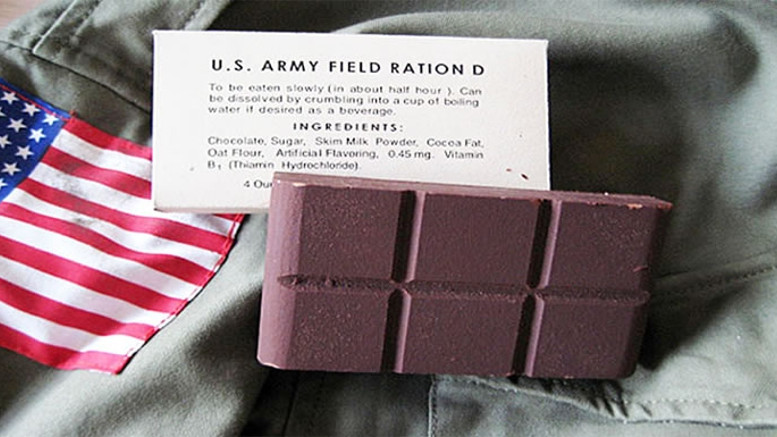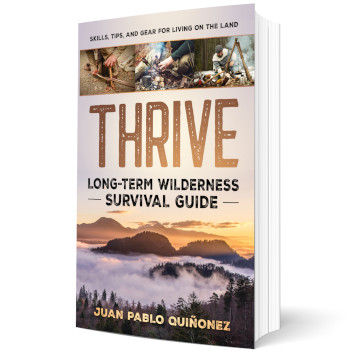What emergency food would you put in a get home or bug out bag? Below are some great options, and the reasoning behind.
First I must say that emergency food is not needed in a short term survival kit. Why? Because the average person is perfectly capable of working for 72 hours or more without food. You’ll feel a lack of energy when you hit the wall (depletion of glycogen reserves), but you can still get by.
On the other hand, having food in a vehicle kit makes more sense since you are not limited as much by size or weight. For a Get Home Bag or Bug Out Bag a few energy bars won’t do much to nourish you, but they’ll boost your mood. Keep in mind that a person needs anywhere between 2000 and 3500 calories per day depending on activity levels.
I first thought about energy to weight ratio when thru-hiking the Pacific Crest Trail.
The John Muir Trail section of the Sierra Nevada, one of the main highlights, had few resupply points. For a section of the trail I needed to hike eight days between resupplies and wanted to keep the weight of my pack to the minimum. I was fast-packing, averaging more than a marathon a day.
I decided to pack a big jar of peanut butter and olive oil in addition to my usual food. I sprinkled oil on my food, and ate spoonfuls of peanut butter every night. Oil can be a laxative so your body needs to gradually adjust to it.
By the end of the week I couldn’t even look at the jar of peanut butter, but I felt energetic.

Things to consider when choosing an emergency ration for your bug out bag:
- Shelf life: unless you’ll be switching your rations regularly you’ll want food that needs no refrigeration and has a long shelf life.
- Ready to eat: don’t pack food that needs to be cooked. Keep it simple, have food that you can eat on the go. You don’t want to be boiling water to prepare your Mountain House in an emergency.
- Energy dense: to keep your pack lighter and smaller, focus on foods that contain lots of calories.
- Heat and cold resistant: food should remain edible if exposed to extreme temperatures, for instance, if your bag will be in the trunk of a vehicle.
Forget about good tasting food, an emergency ration for a bag won’t taste like a happy meal. MRE’s are not what the military packs in an on-person kit, they are backpacker’s food, not emergency rations. If you want something worth its weight and bulk, you’ll have to look at something along the lines of WWII Field Ration D bars, except with more calories. Those bars weighted 4 oz (113g) and provided 600 calories. That is 5.3 calories per gram. For reference m&m’s have 5 calories per gram.
What about protein needs? In a 72 hr emergency your body won’t be repairing muscle tissue, it will be cannibalising itself to fulfil its energy needs. Energy is the priority.
You’ll find emergency energy bars online, but I’m unimpressed with their average energy ratios (4.8 calories per gram). I understand that they are slightly more balanced nutritionally than m&m’s, but in a short-term emergency that’s not an issue.
Ideas of what to pack:
- Virgin Coconut Oil
Coconut Oil comes in a compact container, and has 8.6 calories per gram. It outlasts olive oil in shelf life (18 months or more after opening) and tastes better. It is also very easy to ration out. And if you think drinking oil is weird, there are people that drink a glass a day of oil for “health” reasons.
- Macadamia Nuts
Dry Roasted macadamia nuts contain 8.2 calories per gram. They are pure fat. They won’t last years of storage though and need to be rotated.
- Pecan Nuts
Dry Roasted Pecans have about 7 calories per gram as well.
- Peanut Butter
Nut butters are another compact option, and most people already have this in their pantries. Although, they don’t offer much more calories versus chocolates, for instance peanut butter has 5.8 calories per gram.
- Emergency Bars
Although they don’t pack as much energy as the above options at 4.8 calories per gram, life raft emergency bars deserve mentioning for their five-year shelf life and ability to withstand hot and cold temperatures.
Bug Out Bag Food
Packing any of the above foods is a good way of maximising the limited space and weight of an emergency bag. I insist that food is not an essential item for a 72 hrs emergency pack, but if you really want to carry some food, chose high calorie, ready to eat food. Keep it simple.



20mm Dummy Round? I didn’t set sail without them.